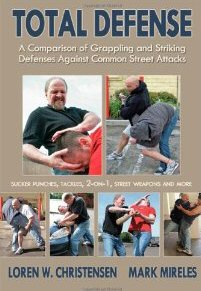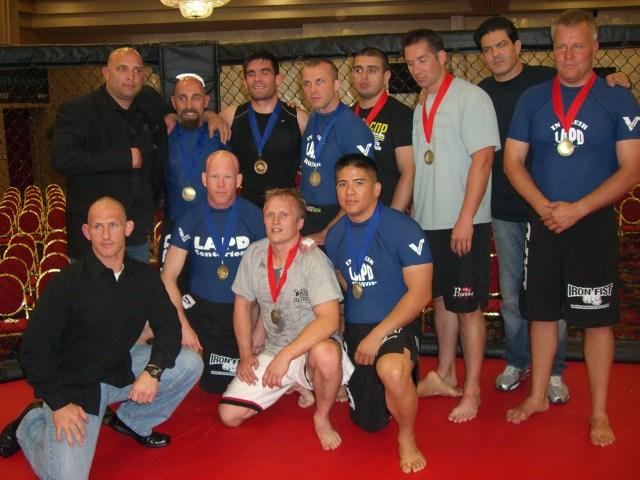A while ago, I interviewed Loren about his book Total Defense. This is now the second part in that series, where I interview the other author, Mark Mireles. Mark gave me some real in-depth answers, explaining in detail how the book came about and more importantly, why.
Here’s the interview, enjoy!
Total Defense: Interview with Mark Mireles
Q: “Total Defense” has a specific topic: defending yourself against the most common techniques used in a street fight. Can you give some examples of these?
Total Defense is a unique book because it takes the perspectives of two martial artists with tons of real life observation and observational experience. It outlines what we considered to be the most common street attacks.
The observational of the book takes decades of street police work and encompasses what Loren and I have seen on the mean streets. This was not hypothetical but in the first person for both of us. The broken bones, bruises, lacerations, and emergency rooms that were all part of the job. We’ve had the opportunity to interview thousands of victims of attacks and between the two us we have about a half-century of policing.
Additionally, we have both broken up our fair share of barroom brawls. As Loren and I prepared the scenarios for Total Defense it was like we had been on the same calls: common themes in violence emerged. From this perspective, Total Defense is street forensics 101.
The operational is the hands-on stuff you need to walk that blue line.

When you’re the one who separates good and evil, when society brakes down, someone is eventually going to try to see what you’re made of. As a police officer, you have a duty to protect people and property and, unlike a regular citizen, there is not an expectation that running away is a method of self-defense. In fact, if a police officer were to run he would be disciplined or terminated from his position. I think it’s important to understand that police work puts us on the front lines and that’s a huge benefit that Loren and I bring to the reader. We simply share the totality of our martial arts training balanced with our observation of how violence unfolds.
That said, operationally Loren and I have been in our share of both lethal and non-lethal force encounters. The violence we saw and experienced did not occur in a sterile environment or in a police academy classroom. It was up-close, visceral, real world violence. This book demonstrates what has worked for us as we share it with the readers: Loren uses his unique methods of striking, ripping, and gouging to launch devastating attacks and I demonstrate grappling based response to the attacks.
Don’t read into this too much though: Loren does his share of holding and mauling (grappling) and I use strikes in conjunction to grappling. We also outline the criminal mind from our real life experiences to illustrate points.
Q: How did you come about selecting those specific attacks?
Total Defense is broken up into two parts: unarmed and armed attacks. The first part covers what Loren and I have determined to be the most common street attacks: the overhand looping right, the tackle, the bear hug, the head lock, and a whole lot more. These are dangerous attacks; some of them can be just as deadly as being attacked with a weapon. For instance, a headlock can turn deadly if your blood or air supply gets cut off. Loren and I take two approaches to break down the ideal counter-attacks so it really is like getting two books in one.
The second half of the book deals with common street weapons and the criminals who use them. We demonstrate how to counter weapons such as bats, knives, and guns, the tools of choice among the criminal element. That means the attacker has a weapon and the model in the book is unarmed because most people don’t carry weapons. In the United States it’s a matter of state jurisdiction if you can carry a gun or a knife. I live in California where gun laws are strict as to carrying them in public as opposed to having a gun in your home. There is also a multitude of laws on what type of knife you can carry. In Europe weapon laws are even more restrictive than in the States. [Read more…]

